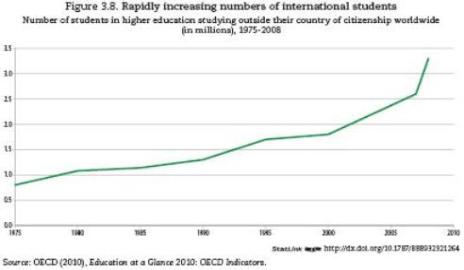Centre for Educational Research and Innovation - CERI
Trends Shaping Education 2010
Introduction | Table of contents
How to obtain this publication | Website
|
ISBN: 9789264075269 |
Trends Shaping Education 2010 What does it mean for education that our societies are increasingly diverse? How is global economic power shifting towards new countries? In what ways are working patterns changing? Trends Shaping Education 2010 brings together international evidence to address questions like these. To make the content accessible, each trend is presented on a double page, containing an introduction, two charts with brief descriptive text and a set of pertinent questions for education. The trends presented are based on high quality international data, primarily from the OECD, the World Bank and the United Nations. The charts contain dynamic links so that readers can access the original data. Trends Shaping Education 2010 is organised around five broad themes, each with its own “find out more” section:
This book is designed to give policy makers, researchers, educational leaders, administrators and teachers a robust, non-specialist source to inform strategic thinking and stimulate reflection on the challenges facing education, whether in schools, universities or programmes for older adults. It will also be of interest to students and the wider public, including parents. The Excel™ spreadsheets used to create the tables and charts in this book are available via the StatLinks printed in this book. |
This book is about major developments that are affecting the future of education and setting challenges for policy makers and education providers alike. It does not give conclusive answers: it is not an analytical report nor is it a statistical compendium, and it is certainly not a statement of OECD policy on these different developments. It is instead a stimulus for thinking about major trends with the potential to influence education. While the trends are robust, the questions raised for education in this book are illustrative and suggestive. We invite users to look further and to add to this basic coverage examples of trends from their own countries or regions.
-
Introduction.
-
Chapter 1. The dynamics of globalisation
-
Chapter 2. New social challenges
-
Chapter 3. The changing world of work
-
Chapter 4. Transformation of childhood
-
Chapter 5. ICT: The next generation ....
|
|
How to obtain this publication
Readers can access the full version of Trends Shaping Education 2010 choosing from the following options:
-
Subscribers and readers at subscribing institutions can access the online edition via iLibrary.
-
Non-subscribers can purchase the PDF e-book and/or paper copy via our Online Bookshop.
-
Order from your local distributor
-
Government officials with accounts () can go to the "Books" tab on OLIS.
Related Documents

